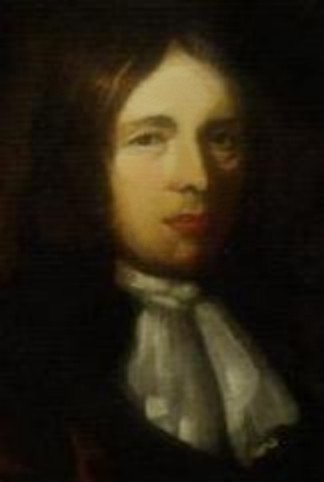- Henry Winstanley
Infobox Person
name = Henry Winstanley

image_size = 200x200px
caption =
birth_date =March 31 , 1644
birth_place =Saffron Walden ,Essex ,England
death_date =November 27 1703
death_place =Eddystone Rock
occupation =Engineer
spouse =Henry Winstanley (
March 31 ,1644 –November 27 ,1703 ) was an Englishengineer who constructed the firstEddystone lighthouse .Early life and career
He was born in
Saffron Walden ,Essex , and baptised there on March 31, 1644. His father Henry became land steward to the Earl of Suffolk, owner ofAudley End House , in 1652, and young Henry also worked at Audley End, first as a porter and then as a secretary. In 1666 Audley End House was bought by Charles II for use as a base when attending Newmarket races, and it became effectively a royal palace.Winstanley developed an interest in
engraving after agrand tour of Europe between 1669 and 1674, where he was impressed by Continental architecture and the engravings in which it was portrayed. On his return he is believed to have studied engraving withWenceslas Hollar , and was employed at Audley End House as assistant to the Clerk of Works. In 1676 he embarked on a detailed set of architectural engravings of Audley End House which took him ten years to complete and which survive as an important early record of English manor house architecture. He also designed a set of playing cards which became very popular and sold well. He was appointed Clerk of Works at Audley End in 1679 on the death of his predecessor, and held the post until 1701.Winstanley was well known in Essex for his fascination with gadgets both mechanical and hydraulic. He had a house built for him at Littlebury which he filled with whimsical mechanisms of his own design and construction, and the "Essex House of Wonders" became a local landmark popular with visitors. In the 1690s he opened a Mathematical Water Theatre known as "Winstanley's Water-works" in London's
Piccadilly . This was a commercial visitor attraction which combined fireworks, perpetual fountains, automata and ingenious mechanisms of all kinds, including "The Wonderful Barrel" of 1696 which served visitors with hot and cold drinks from the same piece of equipment. It was a successful and profitable venture and continued to operate for some years after its creator’s death.Construction of the Eddystone lighthouse
Winstanley became a merchant, investing some of the money he had made from his work and commercial enterprises in five ships. Two of them were wrecked on the Eddystone Rocks near Plymouth, and he demanded to know why nothing was done to protect vessels from this hazard. Told that the reef was too treacherous to mark, he declared that he would build a
lighthouse there himself, and theAdmiralty agreed to support him with ships and men.Construction started on July 14, 1696. The octagonal tower was to be built from Cornish granite and wood, with ornamental features and a glass lantern-room in which candles would burn to provide the light, and was to be anchored to the rock by 12 huge iron stanchions. One notable incident during its construction occurred in June 1697. At this time Britain and France were at war, and a naval vessel had been assigned to protect the workers whenever they were on the reef. On this particular day the ship did not arrive; instead, a French privateer destroyed the work done so far on the foundations and carried Winstanley off to France. Louis XIV, however, ordered his immediate release, with the words: "France is at war with England, not with humanity". Winstanley returned to the Eddystone reef, construction resumed, and the first Eddystone Lighthouse was completed in November 1698.
The lighthouse suffered some weather damage during the winter of 1698 - 1699, and the light was often obscured by spray breaking over the top of the tower. Winstanley therefore had it rebuilt the following spring on a larger scale, with extra stonework and even more elaborate decoration. Once finished, however, it fulfilled its function. During the five years Winstanley's lighthouses operated, no ships were wrecked on the Eddystone.
Death
Winstanley was recorded as having expressed great faith in his construction, going to far as to wish that he might be inside it during “the greatest storm there ever was“. He got his wish. The tower was entirely destroyed on the night of November 27, 1703, during the Great Storm of that year. Winstanley was visiting the lighthouse that night to make repairs, and he and the five other occupants all lost their lives.
Fearless
Winstanley is a character in
Elvira Woodruff 's book,Fearless . He rescues two characters in the story, Digory Beale and Cubby Beale from being killed. He takes Digory as an apprentice, as his his father was already "dead" as they thought. For more about the book, seescholastic.com/discussionguides ee also
*
Audley End House
*Eddystone lighthouse References
* Barnes, Alison. "Henry Winstanley: Artist, Inventor and Lighthouse-Builder, 1644-1703." Saffron Walden: Saffron Walden Museum, 2003.
* Hart-Davis, Adam & Troscianko, Emily. "Henry Winstanley and the Eddystone Lighthouse." London, Sutton Publishing, 2002.
* Lewer, H.W. "Henry Winstanley, Engraver." Essex Review, Vol. 27 (Oct 1918) 161-171
* Semmens, Jason. "Eddystone - 300 Years"." Fowey: Alexander Associates, 1998.External links
* [http://www.trinityhouse.co.uk/interactive/gallery/eddystone.html Information on the Eddystone Lighthouse at Trinity House]
*http://www.cichw.net/pmlight1.html Images of the first Eddystone lighthouse
Wikimedia Foundation. 2010.
